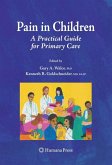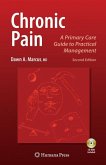The goal of the second edition of the Clinical Handbook of Insomnia is to update and expand on the previous edition by presenting the latest developments in the field of insomnia and by involving more thought leaders from around the world. Over the past 4 years there has been an increasing amount of data regarding the pathophysiology of insomnia and there have been significant advancements in its treatment with FDA approval of 4 new medications for it and the development of several others that are going to be available in the next 5 years.
It has been 5 years since publication of the first edition of Dr. Attarian's Clinical Handbook of Insomnia which at the time was the first significant cl- ical textbook dedicated to insomnia, an often overlooked but important me- cal problem. The book was very well received. There has now been sufficient new information on the subject to warrant a second expanded edition of this very useful volume. Then, as now, the approach is to emphasize the frequent biological causes of insomnia rather than to attribute it primarily to underlying psychological and emotional factors. This new edition is an impressive major effort, having been expanded from 14 to 23 chapters including an extensive revision and updating of previous chapters with new references and the ad- tion of many new authors. An entirely new section of the book deals with insomnia in special populations including teenagers, pregnancy, menopause, and the geriatric population. Other new topics include insomnia as enco- tered in primary care practice, the role of circadian rhythms, the contribution of sleep related movement disorders to insomnia, insomnia in pain disorders, and the interesting entity of paradoxical insomnia, in which there is a large d- crepancy between the objective and subjective estimation of quantity of sleep. This collection within a single volume of practical information concerning a common but often neglected disorder remains a very useful addition to the armamentarium of the general or specialty physician who wishes to properly address insomnia in an informed and responsible manner.
It has been 5 years since publication of the first edition of Dr. Attarian's Clinical Handbook of Insomnia which at the time was the first significant cl- ical textbook dedicated to insomnia, an often overlooked but important me- cal problem. The book was very well received. There has now been sufficient new information on the subject to warrant a second expanded edition of this very useful volume. Then, as now, the approach is to emphasize the frequent biological causes of insomnia rather than to attribute it primarily to underlying psychological and emotional factors. This new edition is an impressive major effort, having been expanded from 14 to 23 chapters including an extensive revision and updating of previous chapters with new references and the ad- tion of many new authors. An entirely new section of the book deals with insomnia in special populations including teenagers, pregnancy, menopause, and the geriatric population. Other new topics include insomnia as enco- tered in primary care practice, the role of circadian rhythms, the contribution of sleep related movement disorders to insomnia, insomnia in pain disorders, and the interesting entity of paradoxical insomnia, in which there is a large d- crepancy between the objective and subjective estimation of quantity of sleep. This collection within a single volume of practical information concerning a common but often neglected disorder remains a very useful addition to the armamentarium of the general or specialty physician who wishes to properly address insomnia in an informed and responsible manner.
From the reviews of the second edition:
"This second edition of a splendid textbook focused on insomnia contains significant revisions and added chapters to further explain this 'condition' that disturbs so many patients during their life spans. ... The book reviews how to diagnose and treat insomnia in an individualized manner for specific settings and for specific patients. ... All in all, the book provides a thorough review of literature for management of insomnia ... ." (Indermohan S. Thethi, William H. Wehrmacher and Harry Messmore, Comprehensive Therapy, Fall, 2010)
"This update of a book in the Current Clinical Neurology series presents new information on insomnia. ... This book is designed primarily as a clinically-oriented, readable handbook on the evaluation and treatment of insomnia patients for general practitioners in the primary care setting. ... This is a significant contribution to the field of sleep medicine in general, and the topic of insomnia in particular. Given new developments in the field of insomnia, this book is a timely addition to the sleep literature." (M. Isabel L. Crisostomo, Doody's Review Service, September, 2010)
"This second edition of a splendid textbook focused on insomnia contains significant revisions and added chapters to further explain this 'condition' that disturbs so many patients during their life spans. ... The book reviews how to diagnose and treat insomnia in an individualized manner for specific settings and for specific patients. ... All in all, the book provides a thorough review of literature for management of insomnia ... ." (Indermohan S. Thethi, William H. Wehrmacher and Harry Messmore, Comprehensive Therapy, Fall, 2010)
"This update of a book in the Current Clinical Neurology series presents new information on insomnia. ... This book is designed primarily as a clinically-oriented, readable handbook on the evaluation and treatment of insomnia patients for general practitioners in the primary care setting. ... This is a significant contribution to the field of sleep medicine in general, and the topic of insomnia in particular. Given new developments in the field of insomnia, this book is a timely addition to the sleep literature." (M. Isabel L. Crisostomo, Doody's Review Service, September, 2010)








